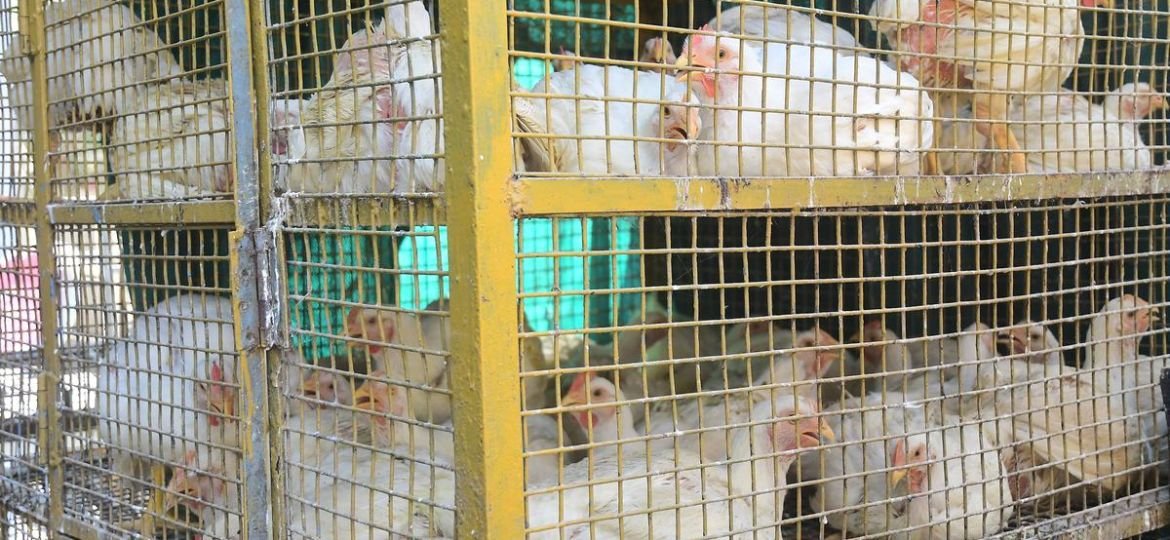

The current H5N1 outbreak has been a disaster waiting to happen, as experts have sounded the alarm about unsafe conditions in industrial animal production for more than 10 years. There has never been a more pressing time to discuss farm animal welfare from an Indian environmental-legal perspective. India’s environmental laws and regulations must reflect what the public health crisis is showing us: that animal welfare is closely linked to public health, ecosystem health and biodiversity conservation – the One Health principle.
The Extent Of The Biosecurity Problem
The first H5N1 infection spread to humans directly from poultry broiler chickens in Hong Kong in 1997. In India, the first patient with H5N1 was reported in Maharashtra in 2006. An outbreak in December 2020 and early 2021 spread to 15 states. This pathogen has crossed many species barriers, causing mortality among polar bears in the Arctic and seals and seagulls in the Antarctic. In humans, the World Health Organization (WHO) estimates the mortality rate for H5N1 at 52%, based on 463 deaths recorded since 2003 among 888 people diagnosed with the virus. Almost all cases of human infection with avian influenza A (H5N1) have been linked to close contact with infected birds or contaminated environments.
These contaminated environments are created by crowding broiler chickens into wire cages, or “battery cages,” at high densities. The resulting air quality and waste problem has a significant footprint in India due to odor, particulate matter and other greenhouse gas emissions. The Central Pollution Control Board (CPCB) has classified poultry units with more than 5,000 birds as a polluting industry that requires compliance and regulatory approval to set up and operate. Some poultry industrial units have been issued notice of closure by CPCB for violating the law.
Because of contract farming, high debt and a highly specialized skill set, poultry farmers often find it difficult to exit the industry despite losses. However, the myriad problems these farmers face often push them out of business. Farmers are suffering due to market volatility and prevailing practices imposed by industry giants. For example, antibiotics are regularly given to birds as prophylactics and as growth promoters so that more animals can be raised for greater profit. Experts predict that the growing demand for protein will cause an increase in the use of antibiotics in animals.
Several antibiotics classified as critically important and critically important by the WHO are widely sold to farmers for preventive use. Prescribed to day-old chicks to reduce the likelihood of disease and mortality, the practice is still commonly recommended, according to a Bureau of Investigative Journalism investigation reported in Hindu.
Animals are intensively stored in unsanitary conditions. This has a detrimental effect not only on animal welfare and the health of those who consume the derived food, but also on the people who work at these establishments and live nearby. The impact of air emissions, effluents from water systems and solid wastes in the soil generated by these industries is felt by humans, other animals and the environment. There is an urgent need for monitoring and enforcement of legal and regulatory mechanisms.
The faeces generated at these facilities are periodically collected by local farmers to be used as fertilizer. The amount of manure exceeds the carrying capacity of the land and becomes a pollutant. Farmers complain that their crops are damaged and that the waste piles become a breeding ground for disease vectors such as flies. Residents are forced to take measures such as spraying insecticides inside their homes, which leads to shortness of breath and a sickening smell.
Keeping animals in intensive confinement is an offense under the provisions of the Prevention of Cruelty to Animals Act (PCA) 1960. Moreover, the operational activities in these industrial units cause unnecessary pain and suffering to the animals due to mutilation, starvation, thirst, overcrowding and other ills treatments, which is also a breach of the PCA Act.
The 269th Report of the Law Commission of India in 2017 recorded a representation by the Tata Memorial Center that there was evidence that non-therapeutic antibiotics given to poultry cause antibiotic resistance because the living conditions are unhygienic. What’s more, he said, with more open, cleaner and ventilated living spaces, the animals are less likely to need constant antibiotics, making their eggs and meat safer to eat. Finally, it made recommendations for a set of two draft rules for the welfare of broiler chickens in the meat and egg industry, noting that improving animal welfare results in better and safer food. These rules set guidelines in line with existing laws and international best practices for animal care, waste management and antibiotic use, among others.
However, the Draft Rules for the egg industry published by the Ministry of Agriculture and Farmers’ Welfare in 2019 are weak and symbolic. They must follow the recommendations of the Law Commission. Strict monitoring for compliance and enforcement of environmental regulations is the need of the hour in view of the CPCB’s reclassification of the poultry industry as a highly polluting ‘orange category’ industry. In light of the public health crisis of bird flu and the climate emergency, it is critical that the situation be addressed.
Source – thehindu

